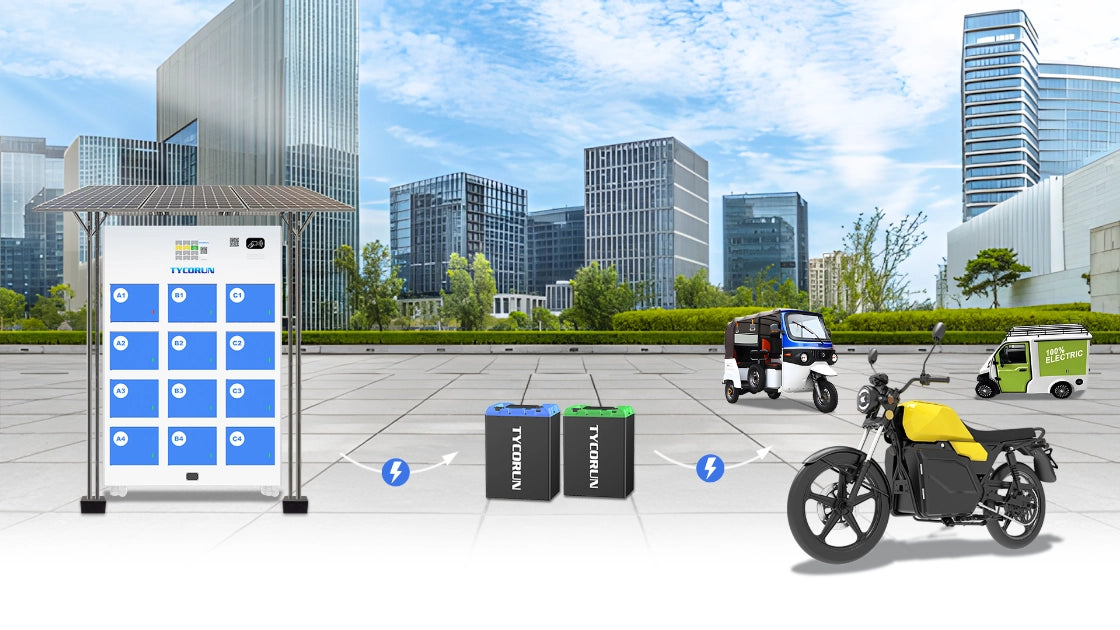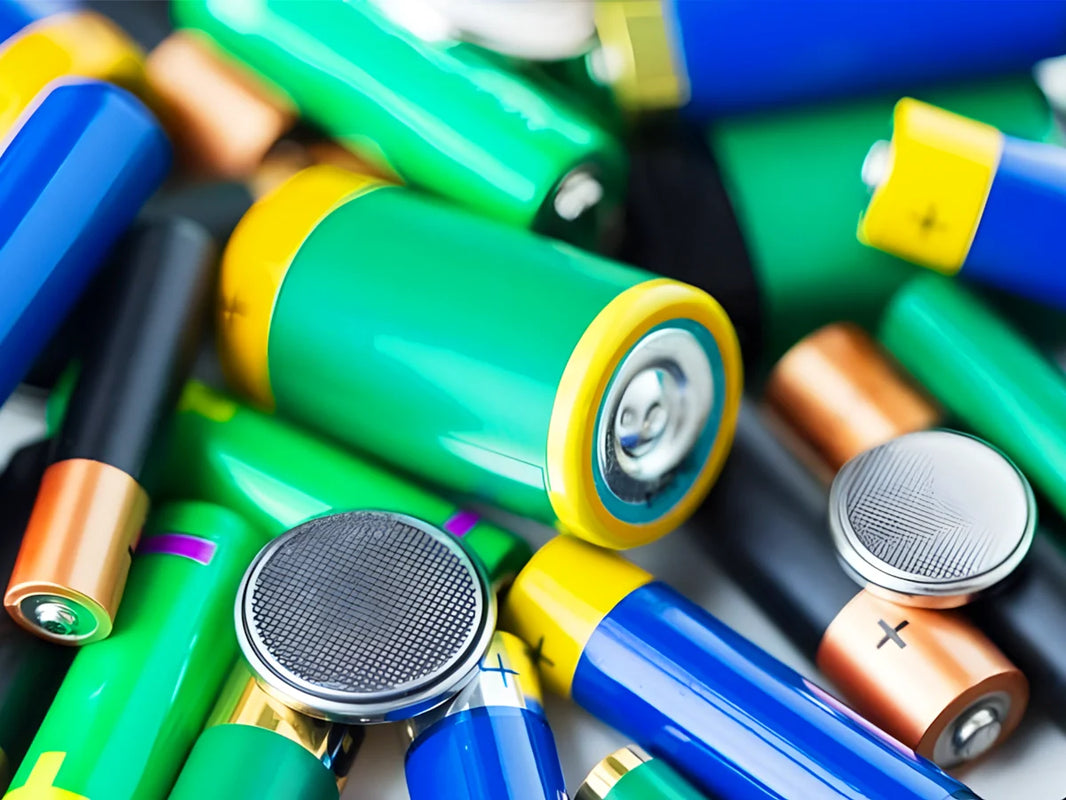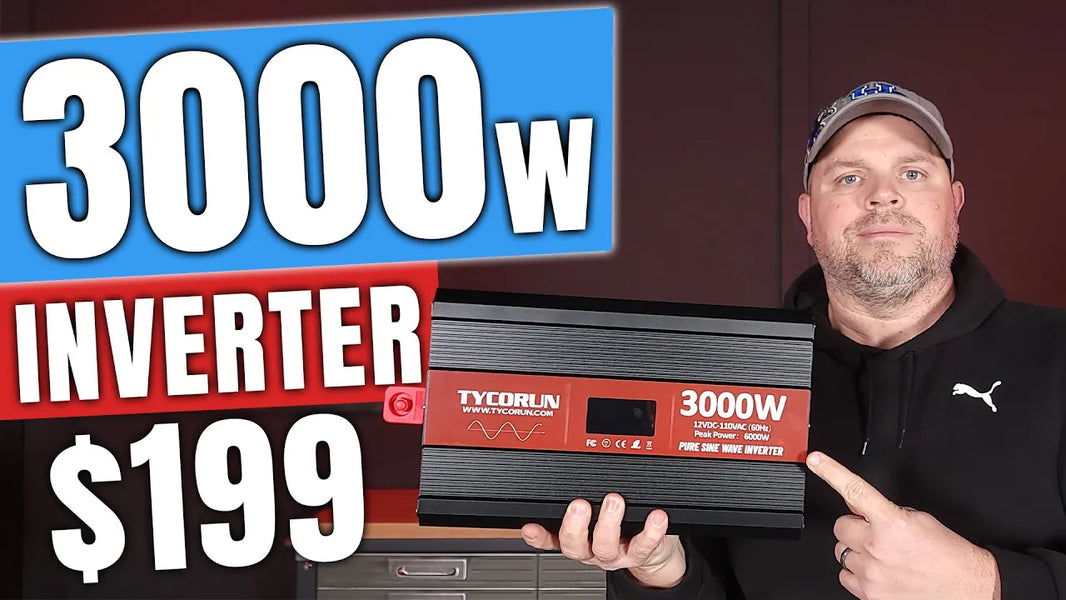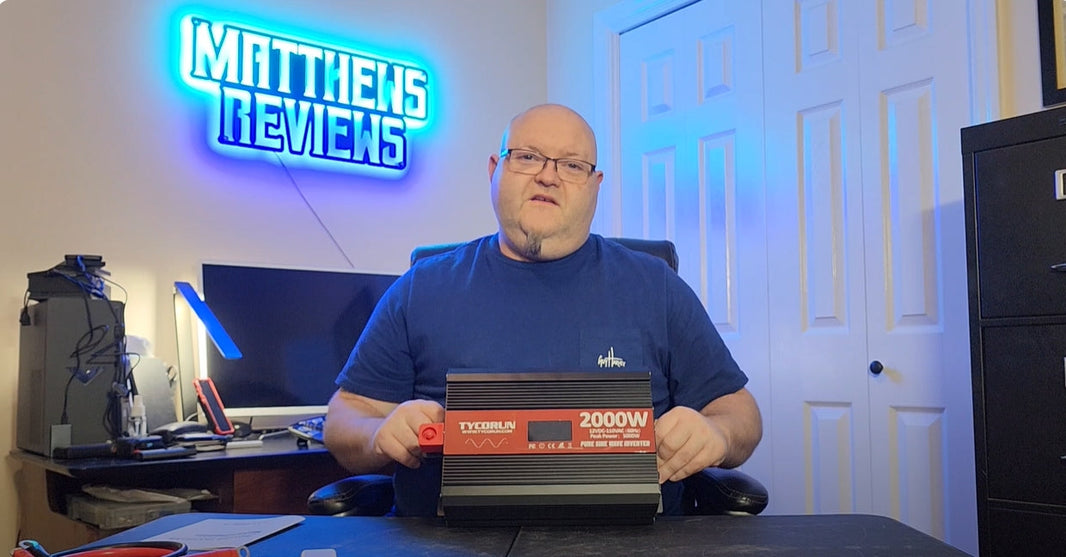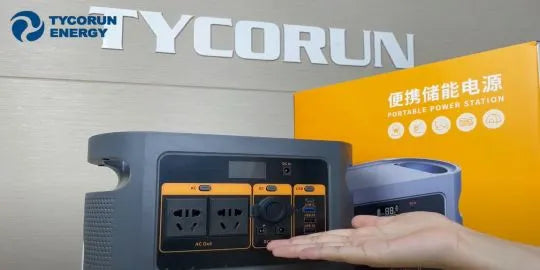
Main content:
We are in a mobile era, where mobile office, mobile communication, mobile leisure, mobile entertainment, etc. In a mobile lifestyle, we not only need low-voltage DC power supplied by deep cycble RV batteries or accumulators, but also the indispensable 220V AC power in daily environments. Inverters can meet our needs in this regard.
This article is a comprehensive choosing guide of pure sine wave inverter for RV for beginners. From the reasons of getting it, steps of choosing to the best RV inverter for your reference.
Is it necessary getting a pure sine wave inverter for RV
Generally, vehicles are powered by batteries, which can meet daily needs. However, due to the special nature of RVs, the 12V current provided by the battery alone is often unable to meet daily needs. RV 12V batteries can only allow low-power appliances to work normally, such as 12V refrigerators, LED lights, air exchange fans, etc.
If you want to use high-power appliances such as microwave ovens, induction cookers, and electric kettles, you need an inverter. Because of this, an inverter is required on the RV to convert 12V DC power into 220V AC power, providing stable AC power for various high-power appliances inside the RV.

How to choose a suitable pure sine wave inverter for RV
The first thing to do after deciding to purchase a pure sine wave inverter for RV is to understand the relevant product specifications of the pure sine wave inverter for RV. Determine the required reverse pure sine wave inverter for RV model by examining the following product specifications, and also refer to the product description to gain a certain understanding of the product during the selection process.
Rated power of pure sine wave inverter for RV
The continuous output power of the inverter is a long-term stable power, and the inverter should be selected to be larger than the rated power of the electrical load, leaving a certain margin.
Instantaneous power of pure sine wave inverter for RV
The instantaneous power that an inverter can withstand, such as when using an air conditioner or other electrical appliances that require a large current to start, should consider the inverter peak power. Only when the peak power can withstand the starting power of the appliance, can the appliance start normally.
Empty load power of pure sine wave inverter for RV
When the inverter is in standby mode, without turning on the inverter or connecting to electrical loads, the power consumption of its own operation is reduced. The smaller the no-load power of the inverter, the smaller the battery loss, and the longer the storage time. This type of inverter is better.
Pure sine wave inverter for RV inverter efficiency
The inverter efficiency refers to the ratio of the inverter output power to the input power. The higher the inverter efficiency, the smaller the energy loss, and the better the inverter.
Charging current
The magnitude of the charging current that the inverter provides to the battery determines the time it takes to fully charge. The larger the charging current, the shorter the time, which is known as fast charging. Of course, the higher the requirements for inverter charging technology, the faster the charging within the current range that the battery can withstand, the better.
Noise/Heat
During the voltage conversion process of the inverter, the coil magnetic field and its own design inevitably generate noise and heat. The smaller the noise, the better, and the smaller the heat treatment, the better.

What size inverter do I need to run an RV
Most common inverters are 1000W, 2000W, and 3000W. So, how to choose a suitable inverter depends on the actual power load inside the car. For high-power appliances such as air conditioners and refrigerators, the starting current is equivalent to 3-9 times the normal working current, so a high power inverter should be selected.
Take the 3000W inverter for RV as an example. The loads that need to be used simultaneously inside the RV, with a total rated power not exceeding 2800W, can ensure a stable current of 3000W. Another important note is that when using an inverter, do not operate it at full load for a long time, otherwise it will greatly shorten the lifespan of the inverter and significantly increase the failure rate of the inverter. It is best to use the inverter in a state that does not exceed 80% of the rated power, and do not use it continuously for a long time.

What will a 1000W pure sine wave inverter run
Tycorun 1000 watt inverter for RV sustainable load is approximately 800-1000W (10-20% margin needs to be reserved to avoid overload).
- Applicable equipment
Small appliances: mobile phone/computer charging (<100W), LED lights (10-50W), electric fans (50-100W).
Medium sized appliances: small rice cookers (300-500W), coffee makers (500-800W), low-power microwave ovens (700W).
Not applicable: High energy consuming equipment such as air conditioners, high-power electric kettles, induction cookers, etc.
The sustainable load of the Tycorun 2000W pure sine wave inverter for RV is approximately 1600-2000W (with the same margin to be reserved).
- Applicable equipment
High power appliances: microwave oven (1000-1500W), induction cooker (1500-2000W), small air conditioner (800-1500W).
Simultaneous operation of multiple devices: for example, using a rice cooker (800W) and a hot water kettle (1200W) simultaneously.
Attention: It is necessary to check whether the battery capacity supports long-term high load.

Best pure sine wave inverter for RV
When the inverter is in use, the output power is less than the input power, which involves the issue of its own output power, that is, the efficiency of the inverter. The unit of efficiency is percentage (%).
For example, the maximum efficiency of an inverter can reach 92%, which means that 1000W of battery DC power can be converted into 920W of AC power, of which 80W of heat loss is lost. Therefore, the higher the efficiency, the higher the utilization rate of inverter battery energy.
The same battery load, some inverters can work for 3 hours, while others can work for 4 hours, which is the difference in efficiency.
One intuitive way to judge efficiency is to look at the size of the inverter. The lower the efficiency, the greater the heat generation. In order to dissipate heat, the volume of the inverter must be enlarged, but the space on the RV is extremely limited. So RVs are generally compact and multifunctional. And the Tycorun pure sine wave inverter for RV precisely meets the requirements of an efficient inverter.
Tycorun pure sine wave inverter for RV is a pure sine wave output that provides stable power support for RV electrical equipment. Equipped with an LED display screen, it can intuitively display all the operating parameters of the machine, and has high conversion efficiency, with a conversion efficiency up to 94%. Using brand new imported electronic materials, the system has good stability, low failure rate, and long service life.
Generally, the normal service life can last between 5 to 15 years. In addition, Tycorun pure sine wave inverter for RV has comprehensive protection functions, including low voltage, high voltage, high temperature, short circuit, overload protection, etc., which can provide reliable and stable power assistance for your RV life, making your RV life convenient.

Conclusion
RV enthusiasts, it is best to use a pure sine wave inverter for RV, as it has good output waveform, low distortion, minimal interference to radios and communication equipment, low noise, complete protection functions, and high overall efficiency. Due to the mixed nature of the inverter market, the phenomenon of false power and efficiency is common.
Therefore, when choosing a pure sine wave inverter for RV, car enthusiasts should choose a manufacturer with comprehensive after-sales support, such as Tycorun. They can roughly distinguish the performance of the inverter by checking the product description.
Related articles: Top 10 solar inverter manufacturers in 2025, Top 10 solar inverter companies in Spain, Top 8 solar inverter brands in South Africa

